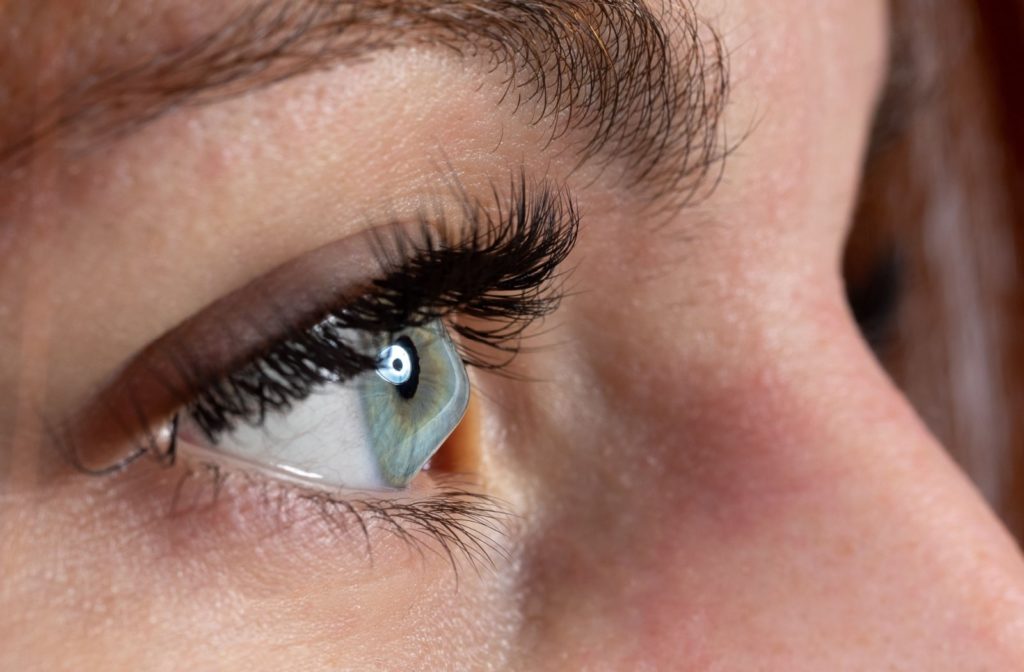Keratoconus, an eye condition characterized by thinning and irregularities of the cornea’s surface, can result in vision loss. Keratoconus affects about 1 in 2000 people.
It can be managed if you show signs of keratoconus and seek prompt care. The first step is finding an excellent eyecare team to examine your eyes and see what they can do for you. 2020 Eyecare Ohio is here to help you navigate keratoconus and any questions you may have.
What Exactly Is Keratoconus?
Keratoconus occurs when the cornea—the clear, dome-shaped part of the eye—begins to thin out and bulge like a cone. This leads to vision distortions, such as seeing double or having lights streak your sight.
How Do I Know If I Have Keratoconus?
The main signs you may have keratoconus are blurry vision and sensitivity to light. Additionally, you could experience:
- Progressively poor vision that is not easily corrected with new prescriptions or contacts.
- Glare/halos.
- Difficulty seeing at night.
- Eye irritation or headaches that correlate with eye pain.
- Sudden or worsening clouding in your vision.
A comprehensive eye exam is critical if you are experiencing any of these symptoms.
What Causes Keratoconus?
Although we don’t know what causes keratoconus, eye doctors have noticed a few genetic and environmental risk factors that may increase the likelihood of developing it. These include:
- Allergies: People with allergies tend to rub their eyes more often, which can stress the cornea and potentially lead to keratoconus.
- Contact lens use: Wearing contact lenses for extended periods or not properly cleaning them can also contribute to developing keratoconus.
- Genetics: While not fully understood, there is evidence that keratoconus may have a genetic component that can run in families, with about 1 in 10 people with keratoconus having a parent with the condition.
- Eye injuries: Trauma to the eye from sports or accidents can weaken the cornea and increase the risk of developing keratoconus.
Although these factors can contribute to keratoconus, they are also potentially related to other eye conditions. Awareness of these factors can help with early detection and treatment, but keeping regular eye appointments is better at protecting your vision and well-being.

Diagnosis & Treatment
A comprehensive eye exam is needed to diagnose keratoconus, where your eye doctor can conduct tests like:
- Eye refraction
- Slit lamp examination
- Keratometry
- Corneal mapping
Treatments range from glasses that restore some normalcy to vision to surgeries like corneal cross-linking—which strengthens the cornea—or even a corneal transplant for severe cases.
Frequently Asked Questions
Is Keratoconus Genetic?
If keratoconus is part of your family’s past, it might be passed on to future generations via your genetics. We recommend keeping to a regular eye exam schedule to monitor any changes to your vision.
How Do I Pick the Right Keratoconus Treatment?
Talk to your eye doctor—they’ll tailor treatments based on your eye’s unique needs.
How Do I Stop the Procession of Keratoconus?
Progress can vary, usually emerging in your late teens into your early 30s. The best defense? Early intervention.
Can I Wear Contact Lenses with Keratoconus?
Contact lenses can be safe if they are specialized for the condition. Scleral lenses are a possibility for those with keratoconus.
What About Surgery?
While surgery can come with risks, success rates for procedures like corneal cross-linking are typically successful and can help manage keratoconus.
How We Can Help
Although keratoconus is a severe eye condition that must be monitored to manage effectively, it is not unheard of. At 2020 Eyecare Ohio, we’re here for you as you navigate your vision health. Stay ahead with optometrist visits and discuss innovative treatments or surgeries with us that could benefit your management of keratoconus.
Eye health is a gateway to overall well-being, and we want to help you prioritize it. Feel great staying local with us, where you are always a friend before you’re a patient. Book an exam today.



